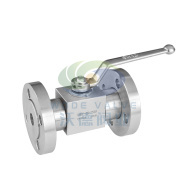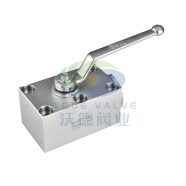News
Understanding Swing Check Valves: Essential Insights for Industrial Applications
Time:
Jan 27,2025
Swing check valves are essential components in many industrial systems, primarily designed to prevent backflow and ensure the unidirectional flow of fluids. Unlike other types of check valves, swing check valves operate using a disc mechanism that swings open and closed based on the fluid flow. This simple yet effective design allows for reliable operation, making them a popular choice in a variety of applications, including water treatment, oil and gas, and chemical processing.
One of the primary advantages of swing check valves is their ability to handle high flow rates with minimal pressure drop. This feature is particularly valuable in systems where maintaining pressure is crucial to operational efficiency. The valve's design enables it to close quickly when flow ceases, effectively preventing backflow and protecting downstream equipment from potential damage.
When selecting a swing check valve, several factors need to be considered. The valve's size must match the piping system to ensure proper fit and function. Additionally, the materials of construction should be compatible with the fluid being transported. Common materials include cast iron, stainless steel, and PVC, each offering different levels of corrosion resistance and durability.
Another important consideration is the valve's installation orientation. Swing check valves are typically installed horizontally, but they can also be used vertically in certain conditions. Proper installation ensures that the valve operates effectively and minimizes the risk of premature wear or failure.
Regular maintenance is critical to ensuring the longevity and reliability of swing check valves. Operators should routinely inspect the valves for signs of wear, corrosion, or other issues. Lubrication of moving parts may be necessary to facilitate smooth operation, and any debris or buildup should be cleaned to prevent blockages.
In conclusion, swing check valves play a pivotal role in maintaining fluid flow in industrial applications. Their straightforward design, coupled with their ability to handle a wide range of flow rates, makes them an indispensable option for preventing backflow. By understanding their functionality, material requirements, and maintenance needs, professionals can optimize their systems for enhanced performance and reliability. Whether you are involved in the water treatment sector, oil and gas industry, or chemical processing, incorporating high-quality swing check valves into your operations will prove beneficial in the long run.
One of the primary advantages of swing check valves is their ability to handle high flow rates with minimal pressure drop. This feature is particularly valuable in systems where maintaining pressure is crucial to operational efficiency. The valve's design enables it to close quickly when flow ceases, effectively preventing backflow and protecting downstream equipment from potential damage.
When selecting a swing check valve, several factors need to be considered. The valve's size must match the piping system to ensure proper fit and function. Additionally, the materials of construction should be compatible with the fluid being transported. Common materials include cast iron, stainless steel, and PVC, each offering different levels of corrosion resistance and durability.
Another important consideration is the valve's installation orientation. Swing check valves are typically installed horizontally, but they can also be used vertically in certain conditions. Proper installation ensures that the valve operates effectively and minimizes the risk of premature wear or failure.
Regular maintenance is critical to ensuring the longevity and reliability of swing check valves. Operators should routinely inspect the valves for signs of wear, corrosion, or other issues. Lubrication of moving parts may be necessary to facilitate smooth operation, and any debris or buildup should be cleaned to prevent blockages.
In conclusion, swing check valves play a pivotal role in maintaining fluid flow in industrial applications. Their straightforward design, coupled with their ability to handle a wide range of flow rates, makes them an indispensable option for preventing backflow. By understanding their functionality, material requirements, and maintenance needs, professionals can optimize their systems for enhanced performance and reliability. Whether you are involved in the water treatment sector, oil and gas industry, or chemical processing, incorporating high-quality swing check valves into your operations will prove beneficial in the long run.
RELATED NEWS




